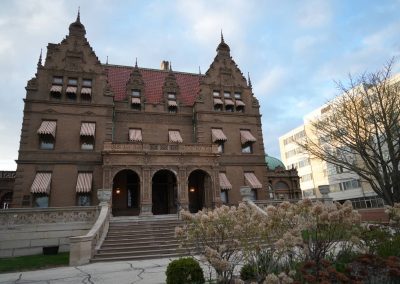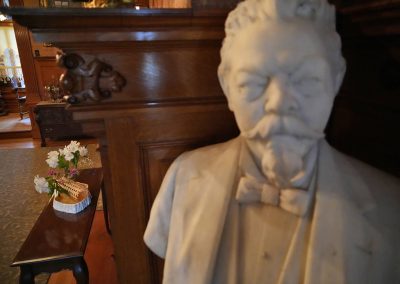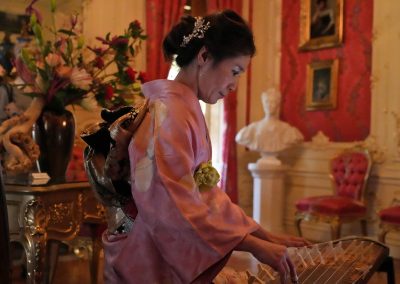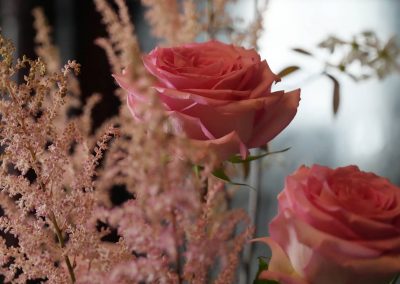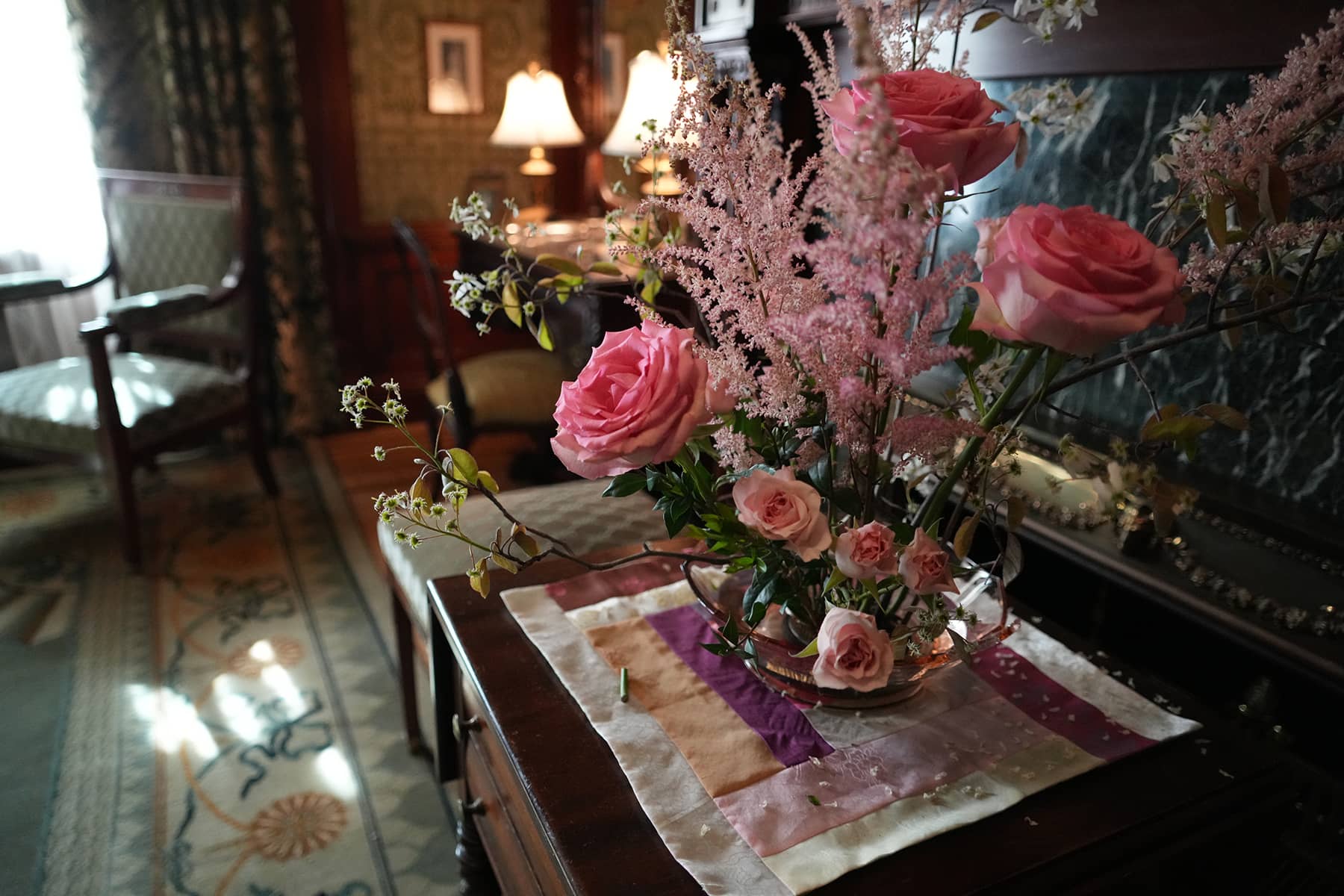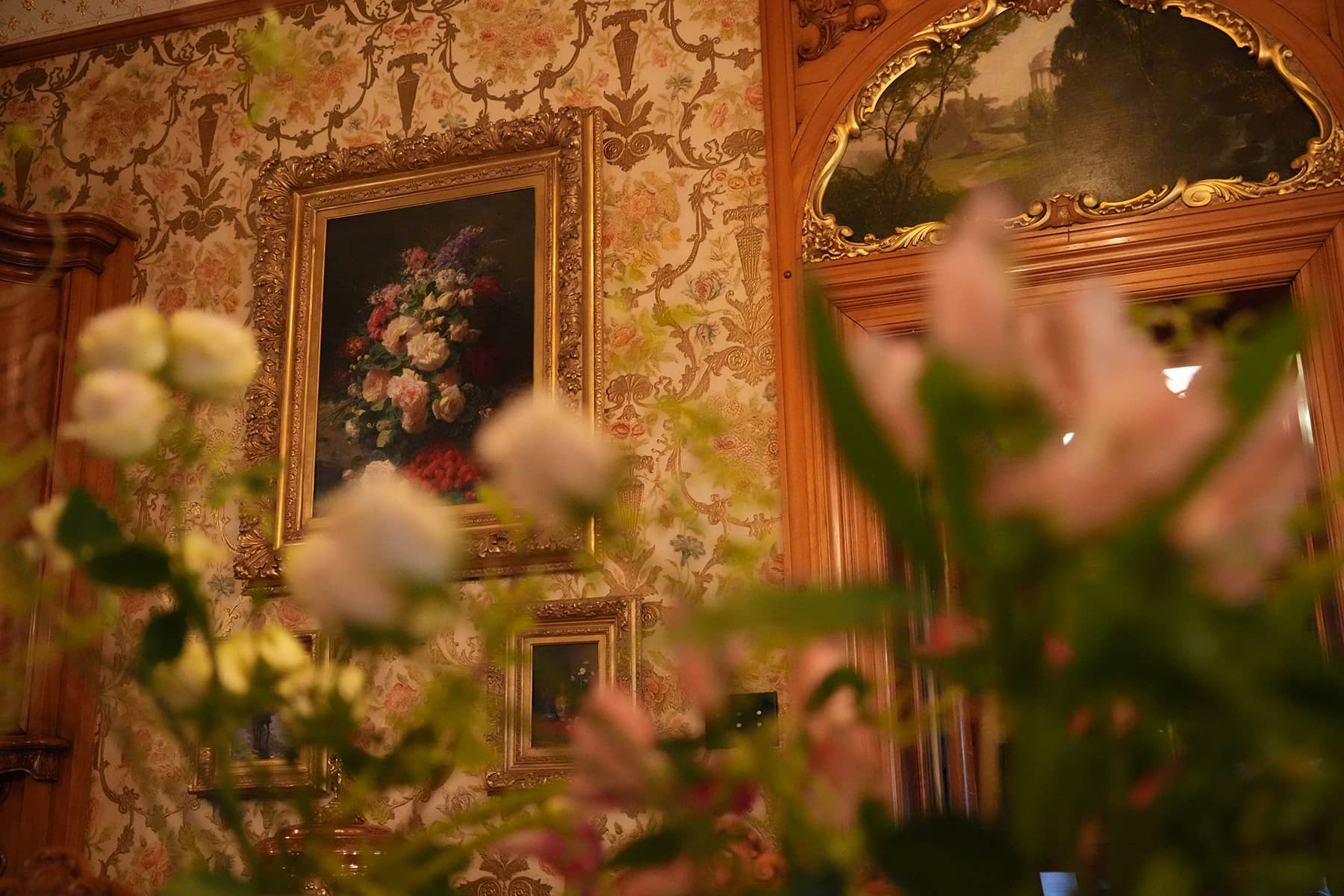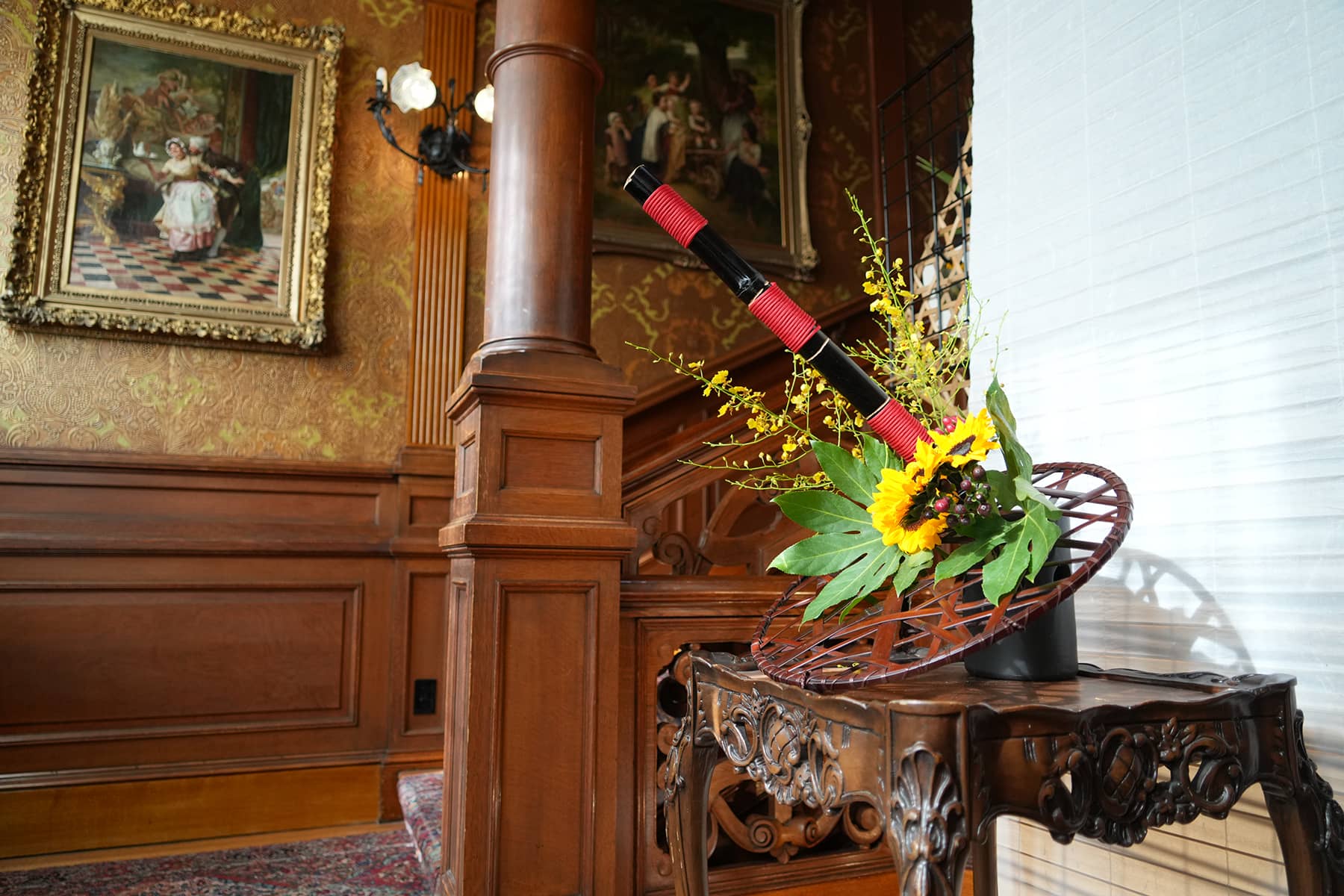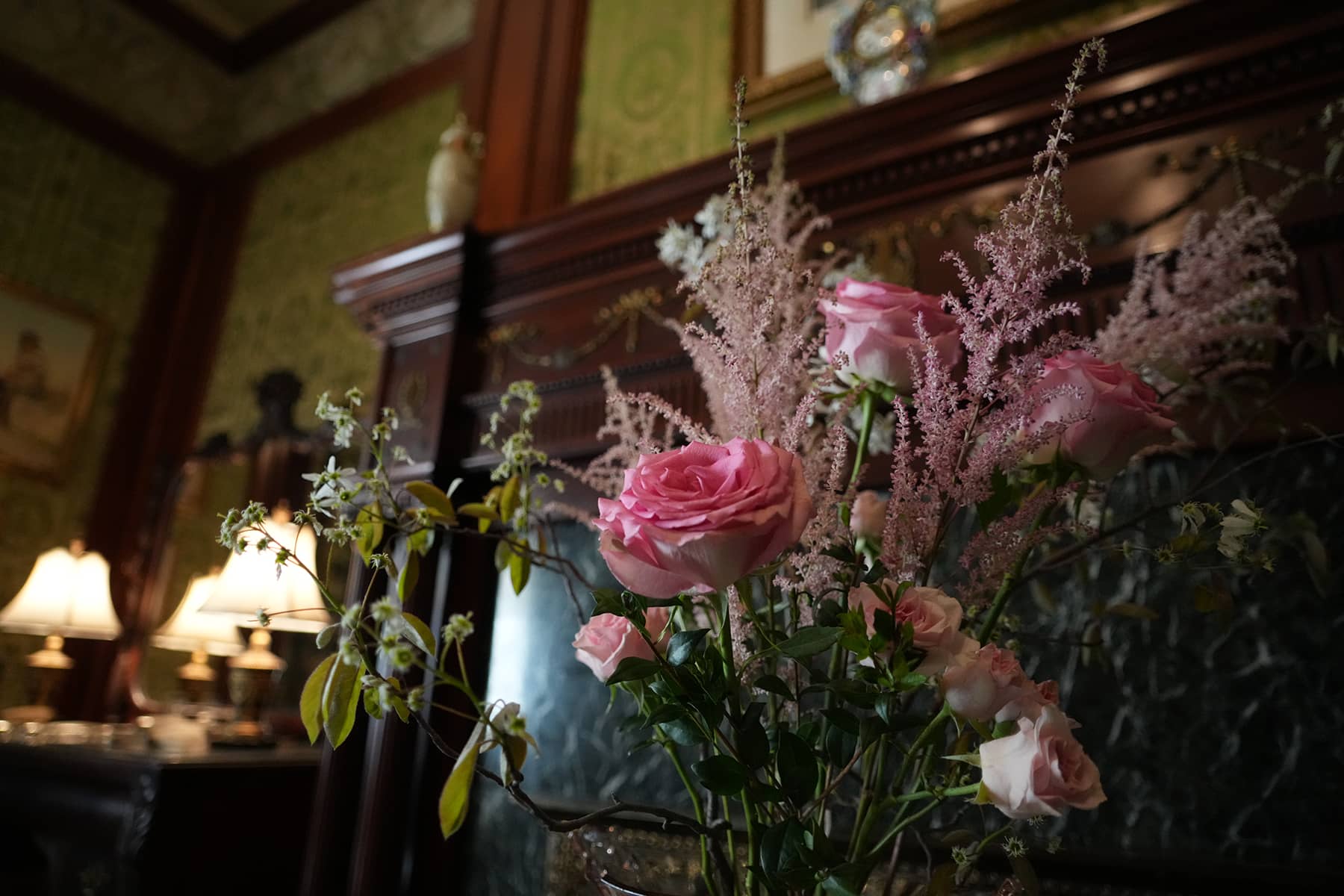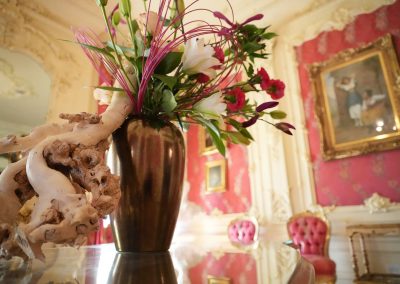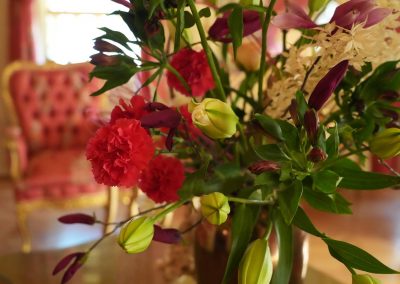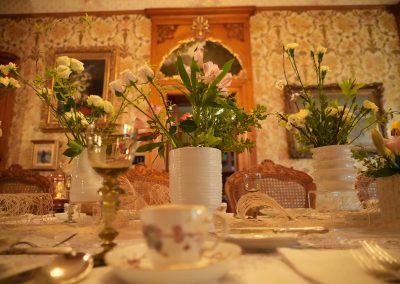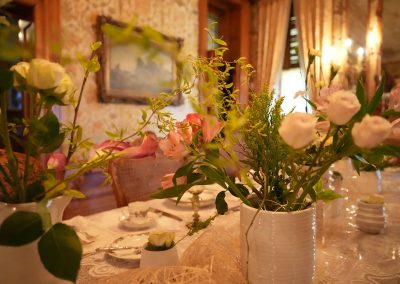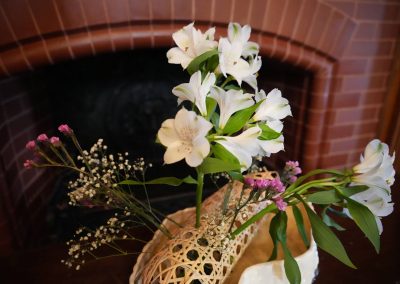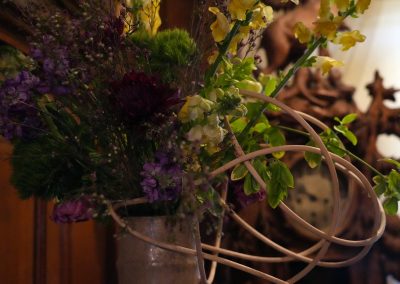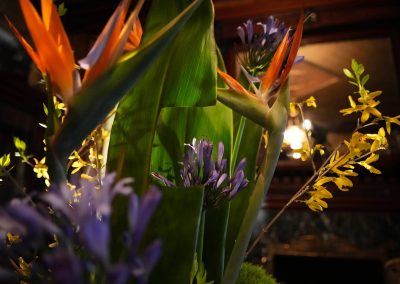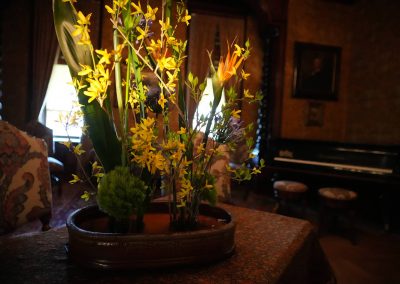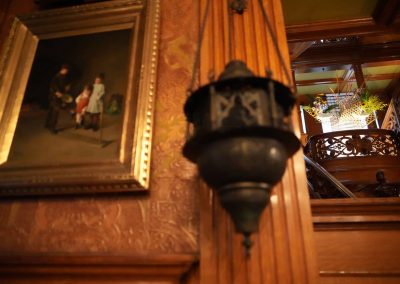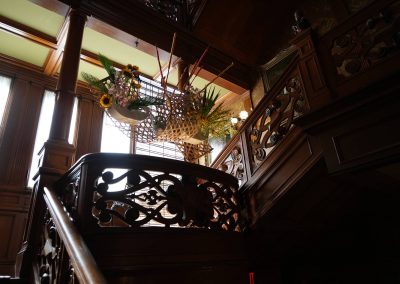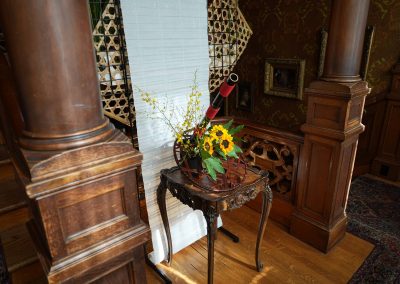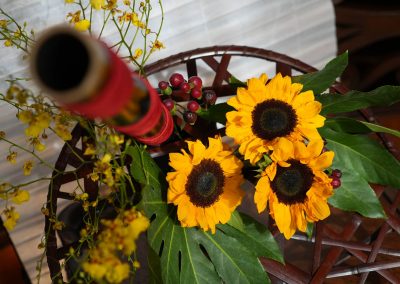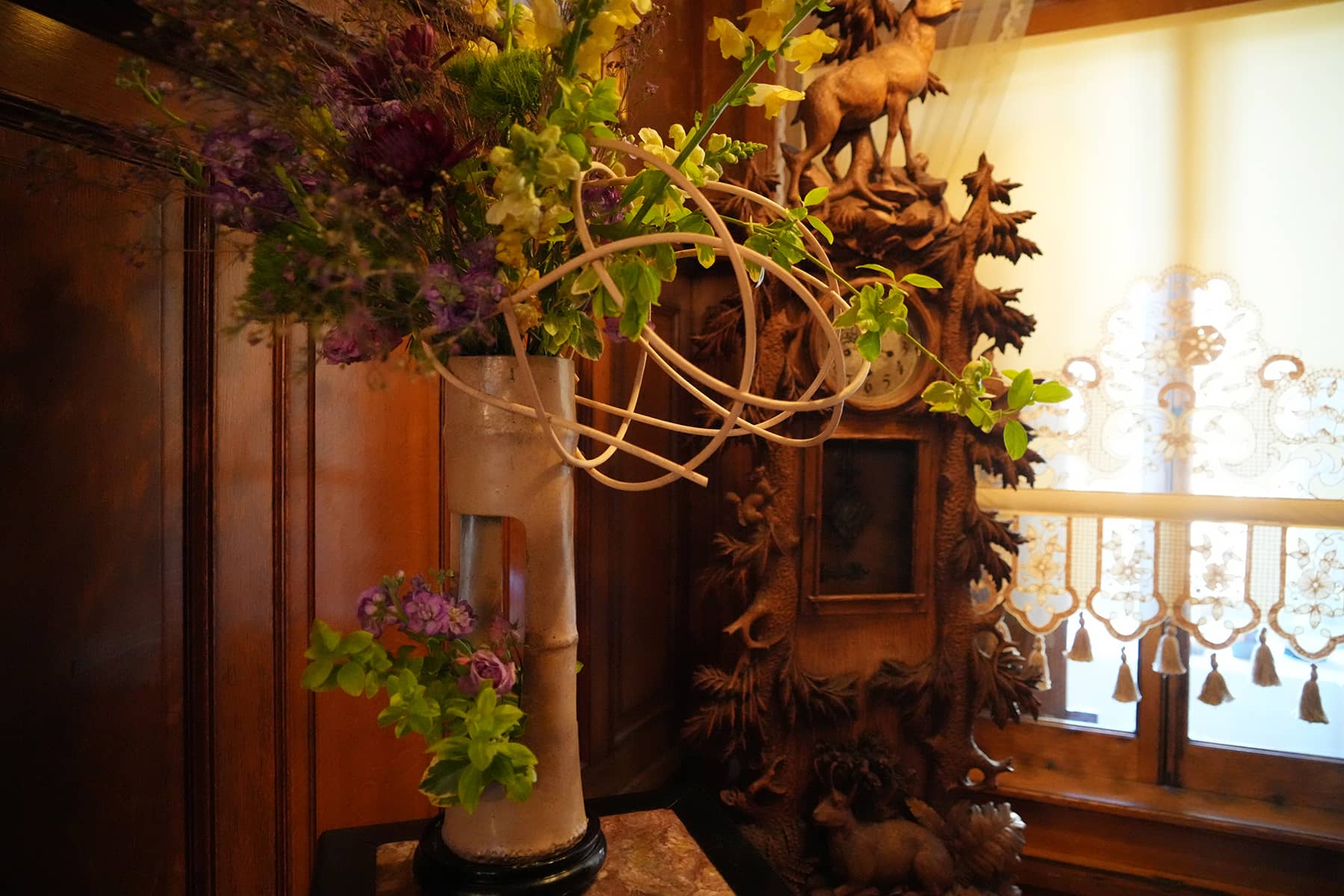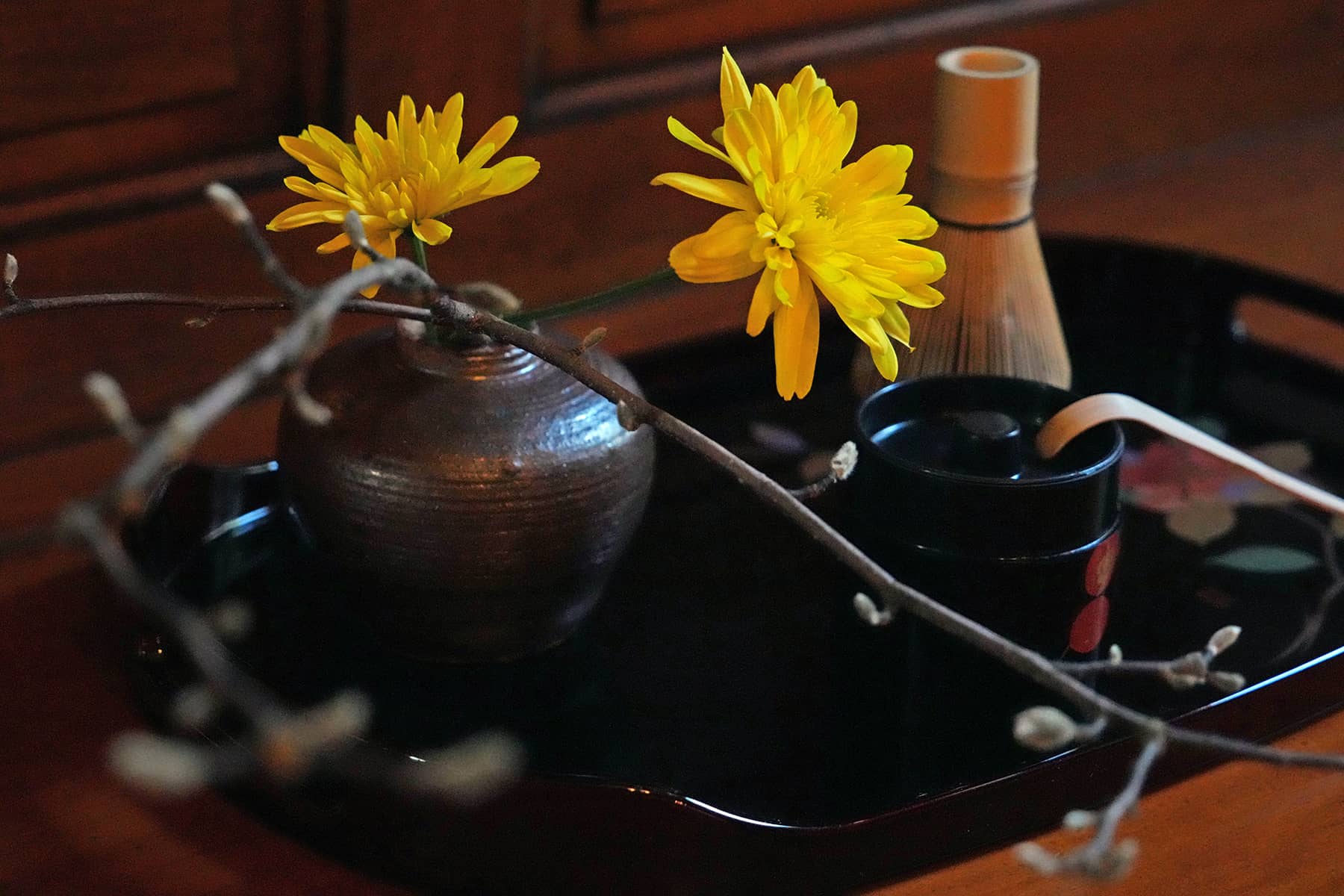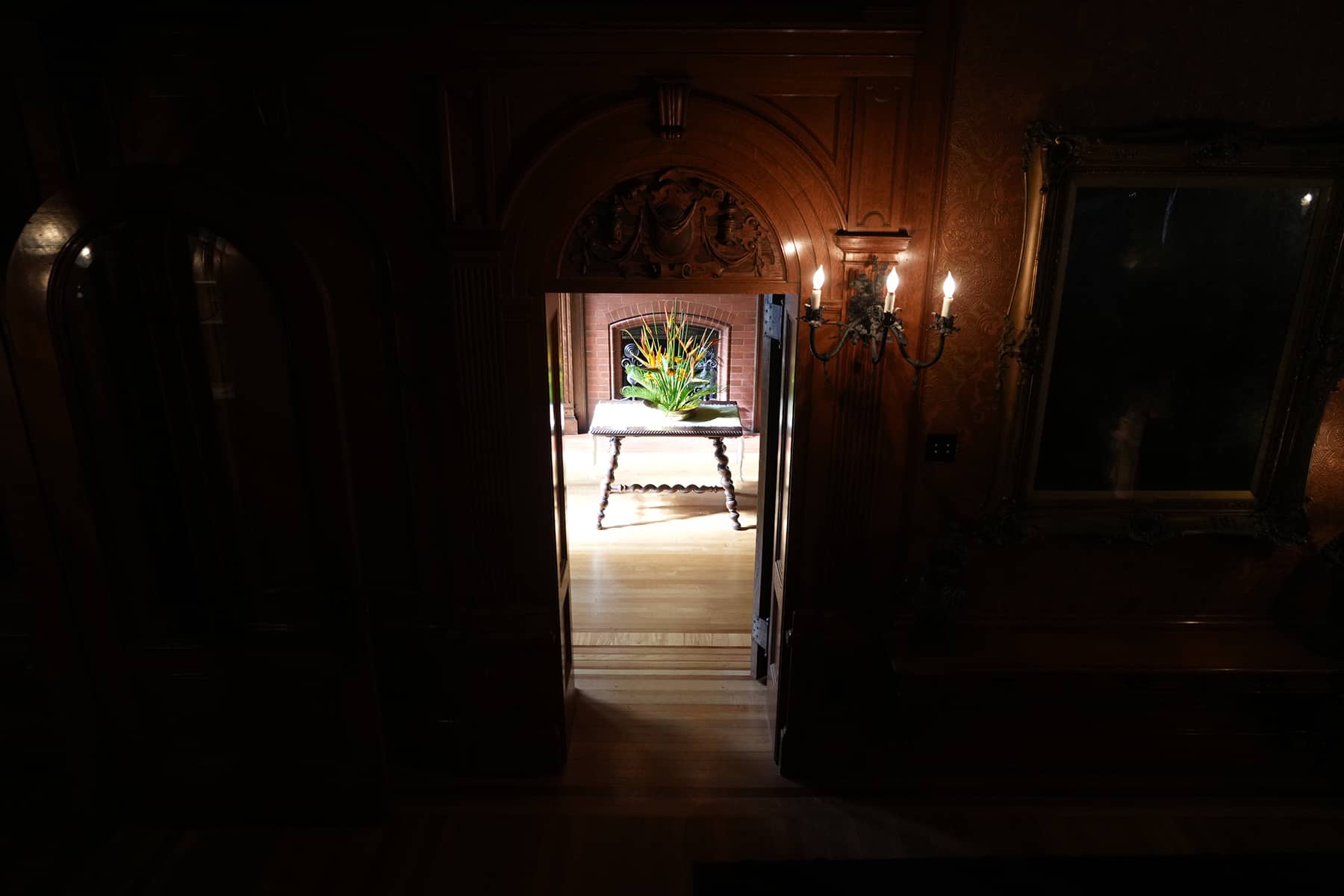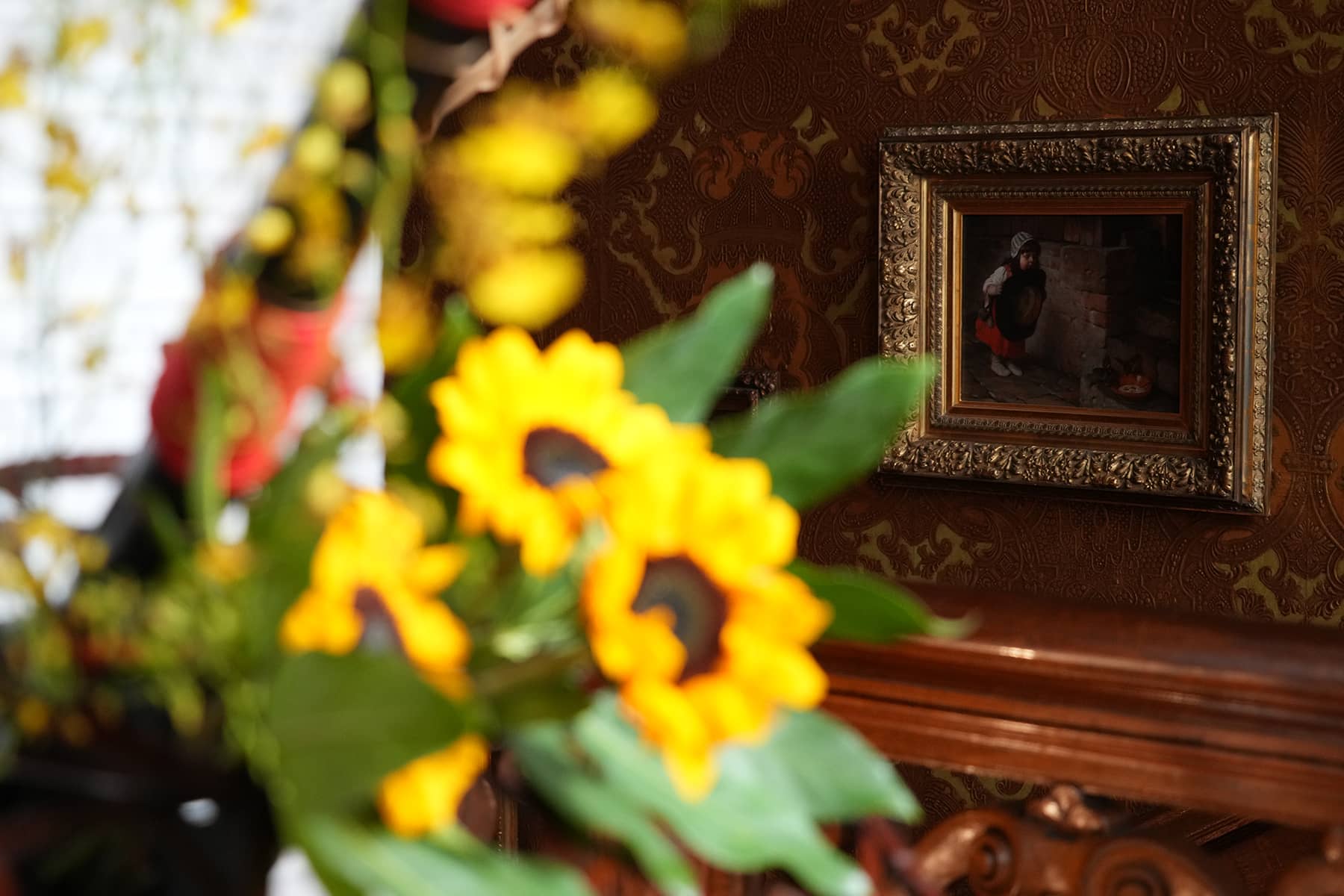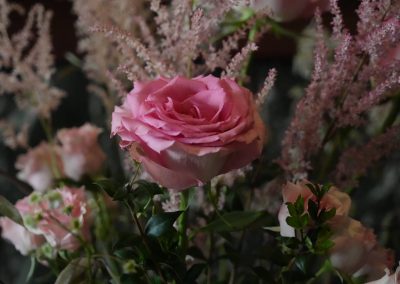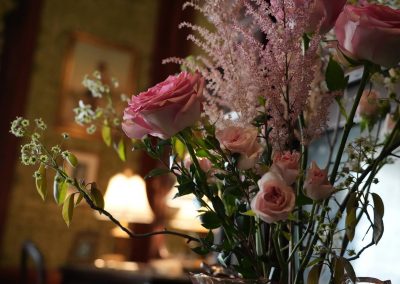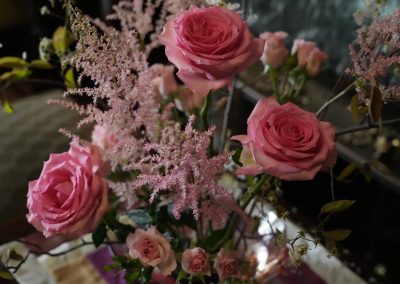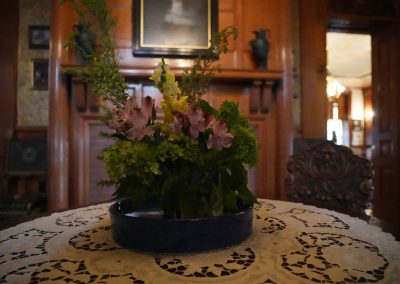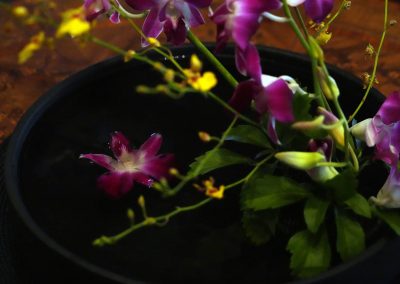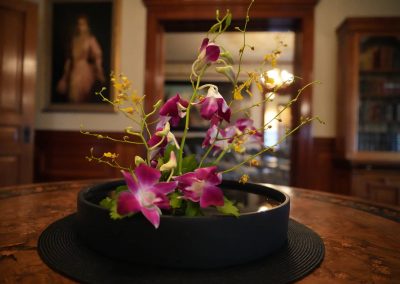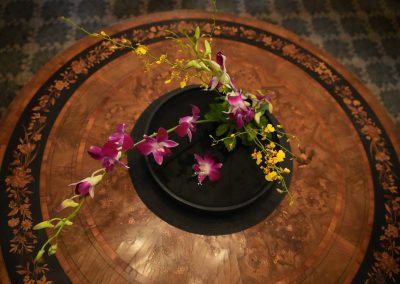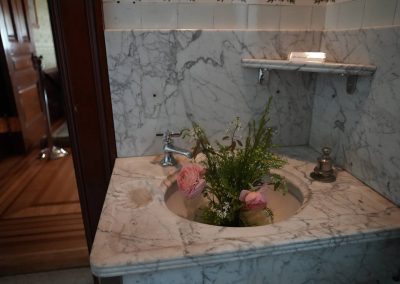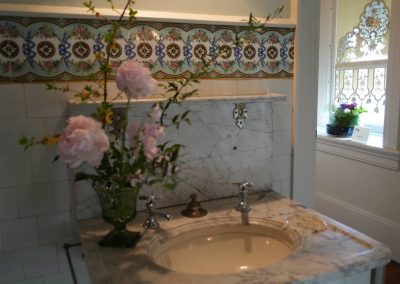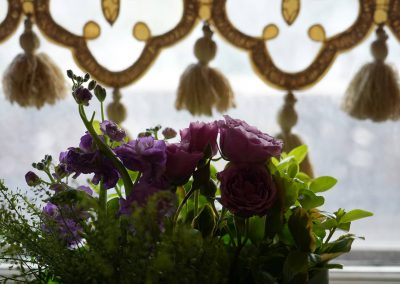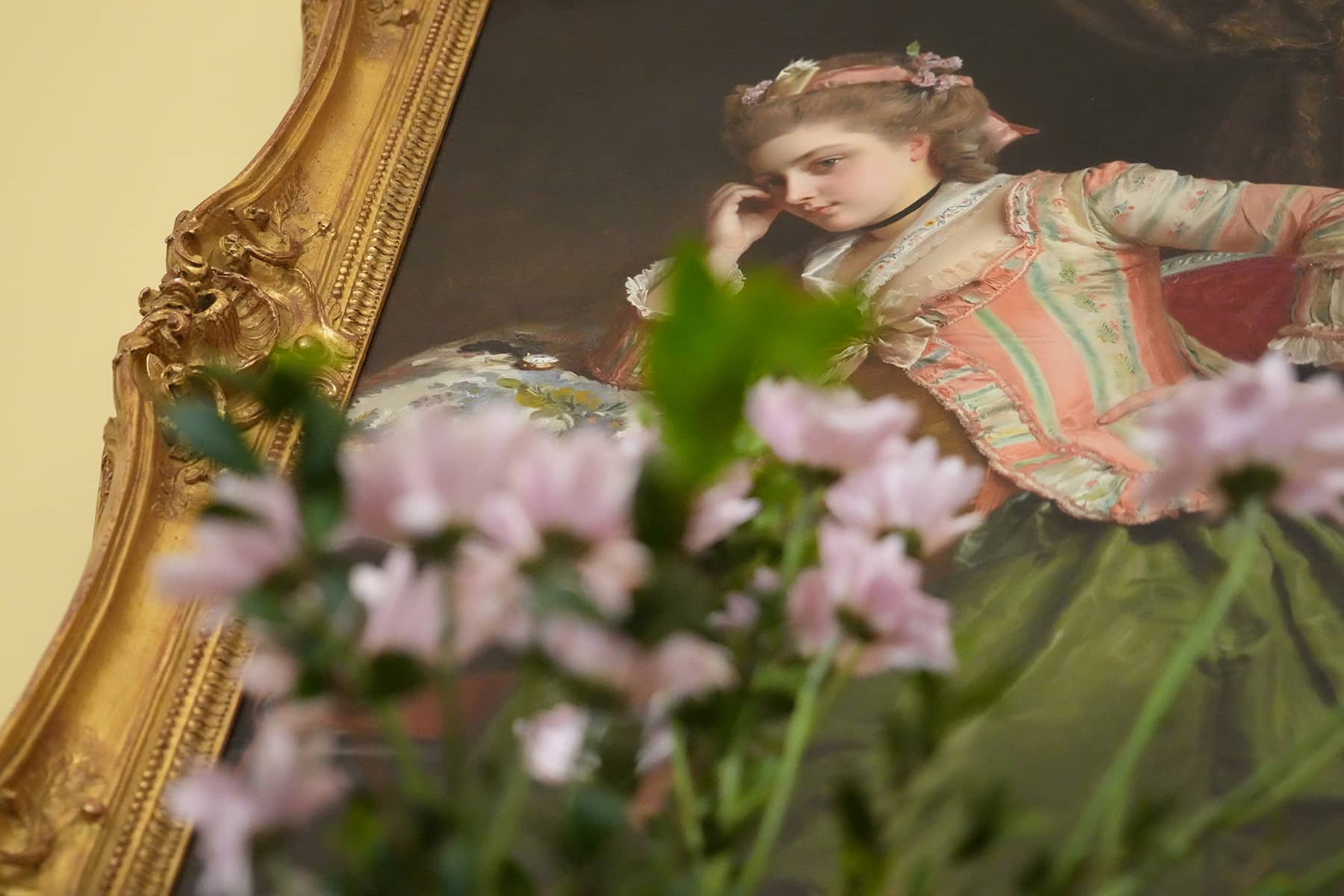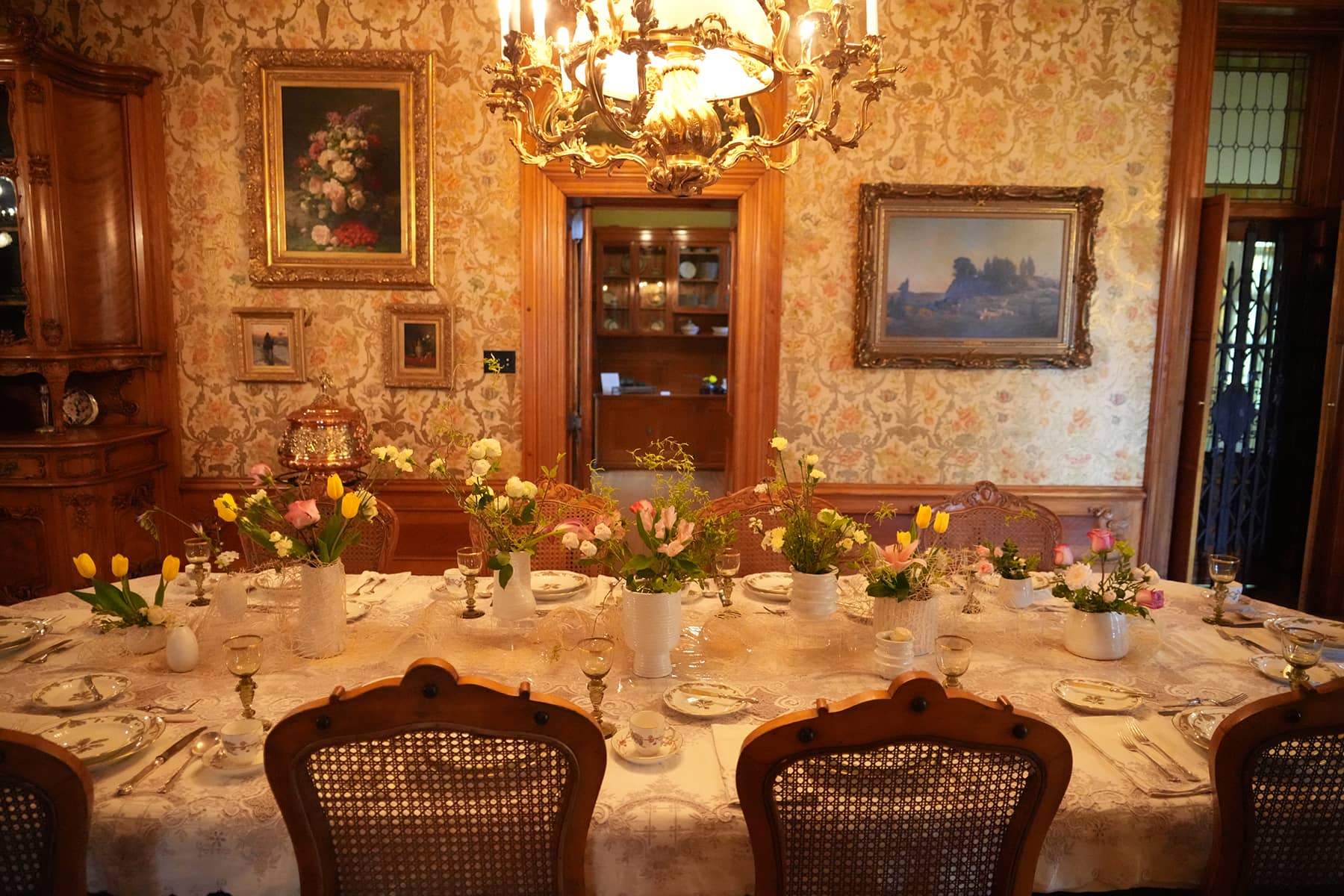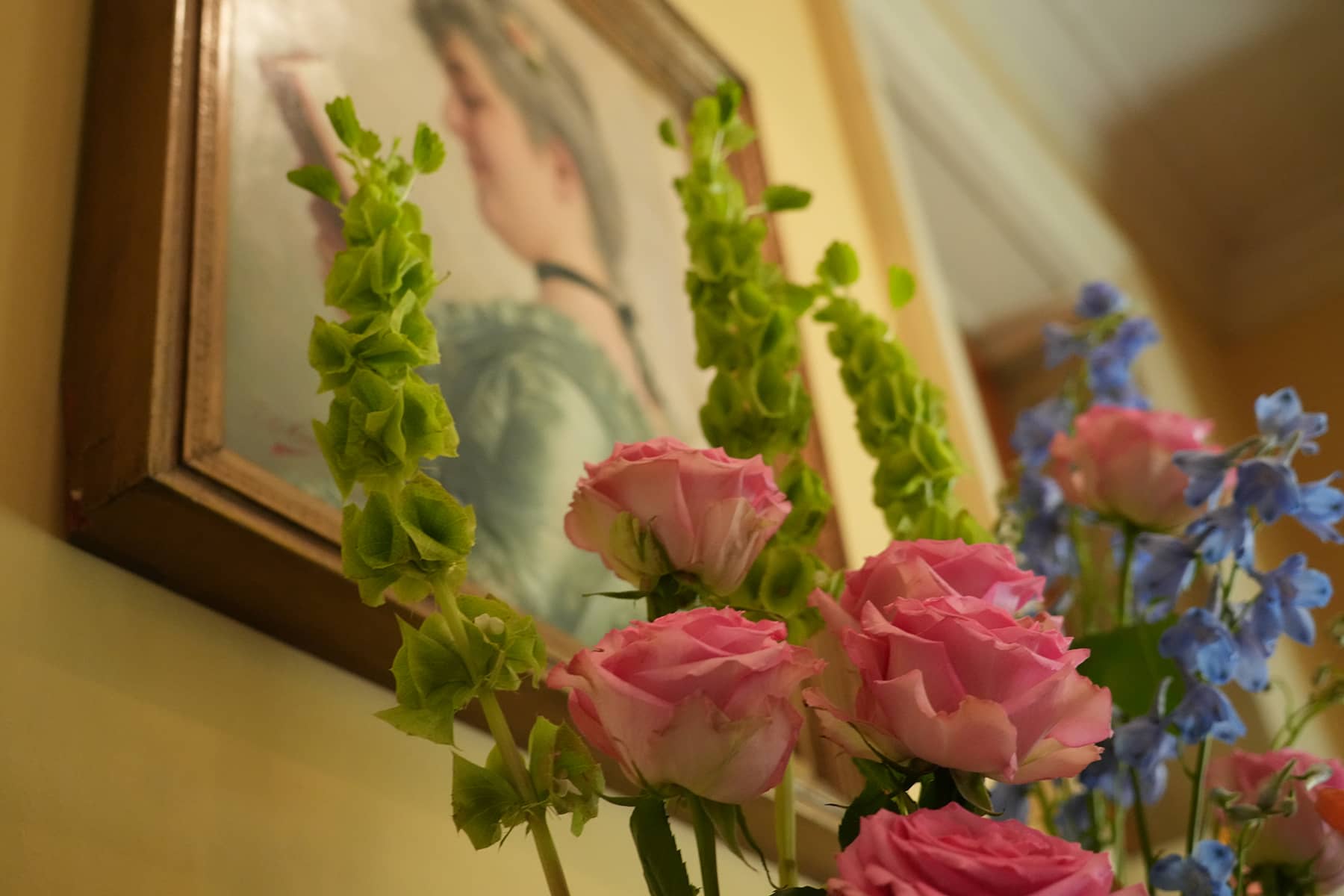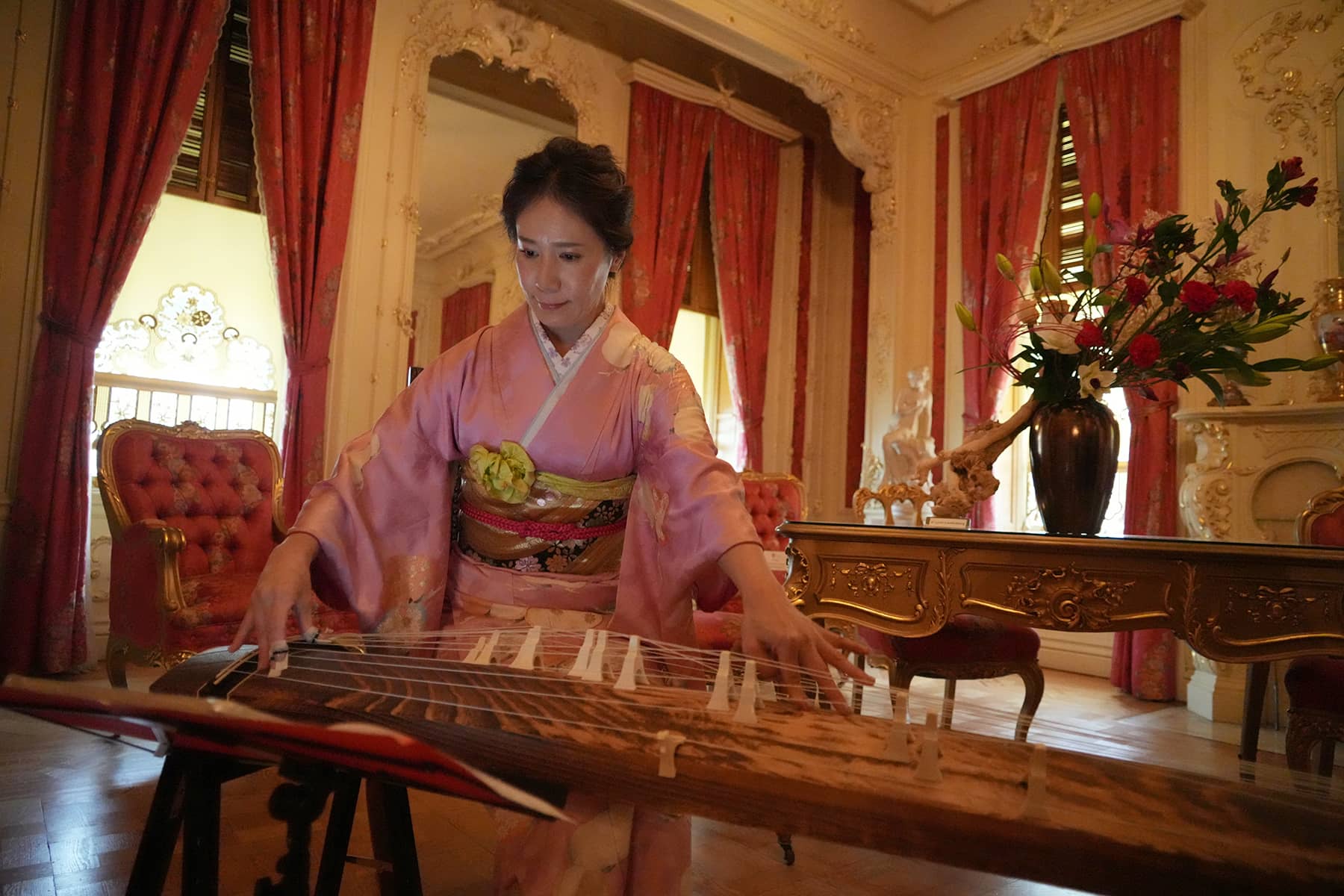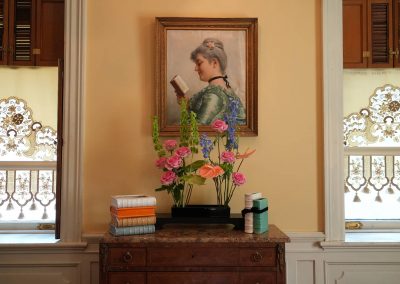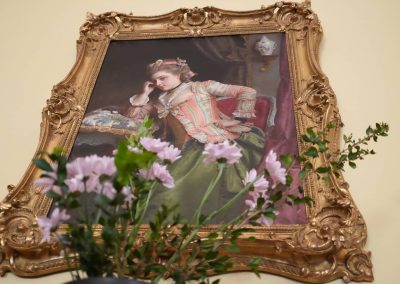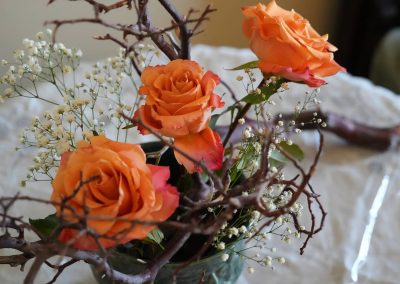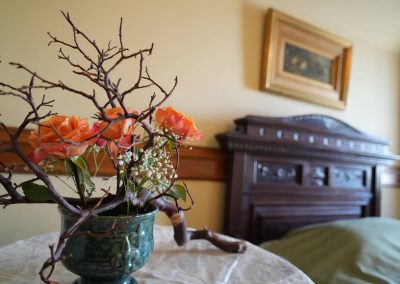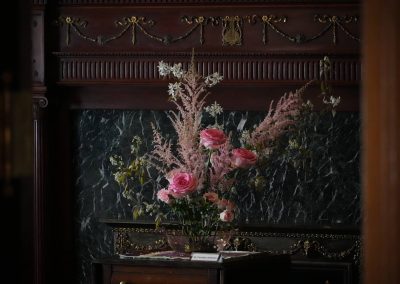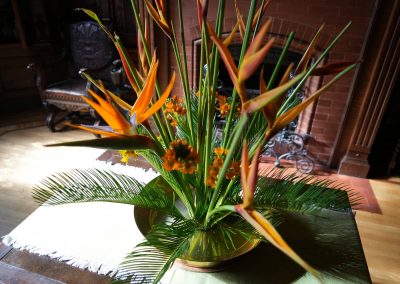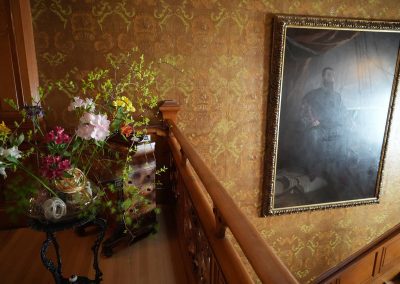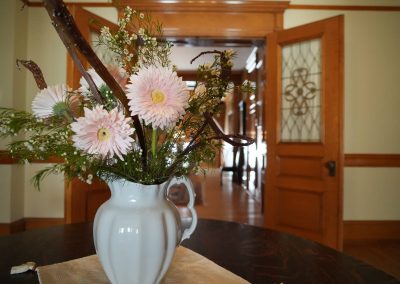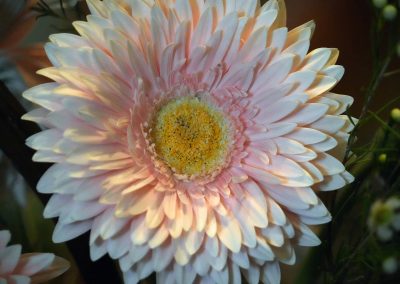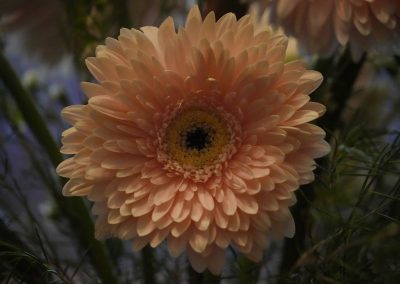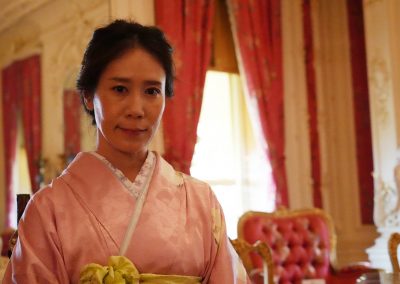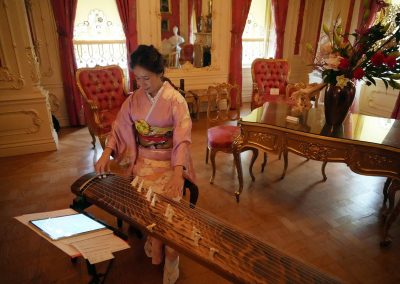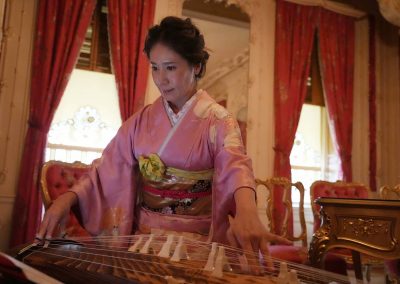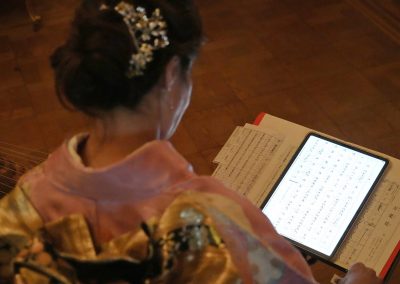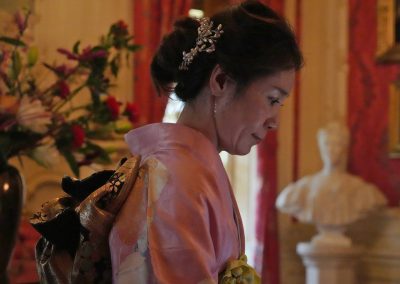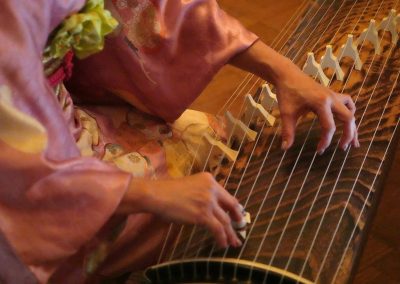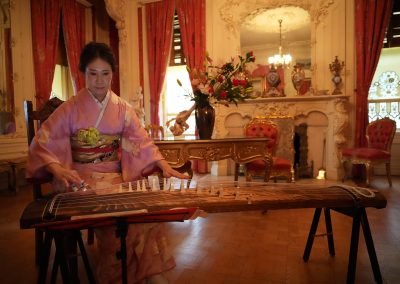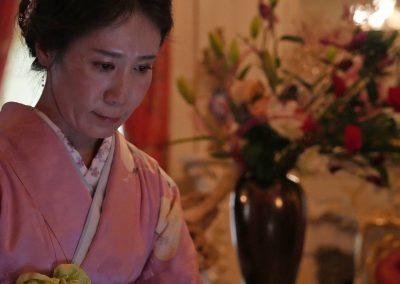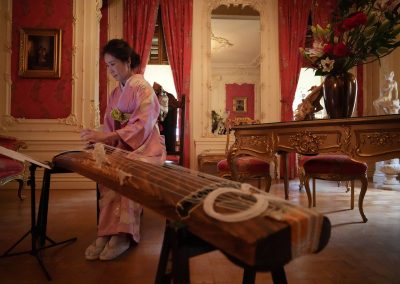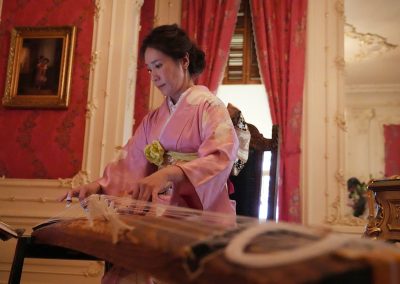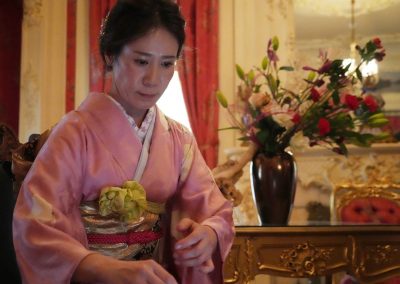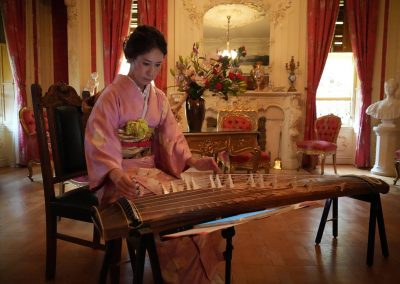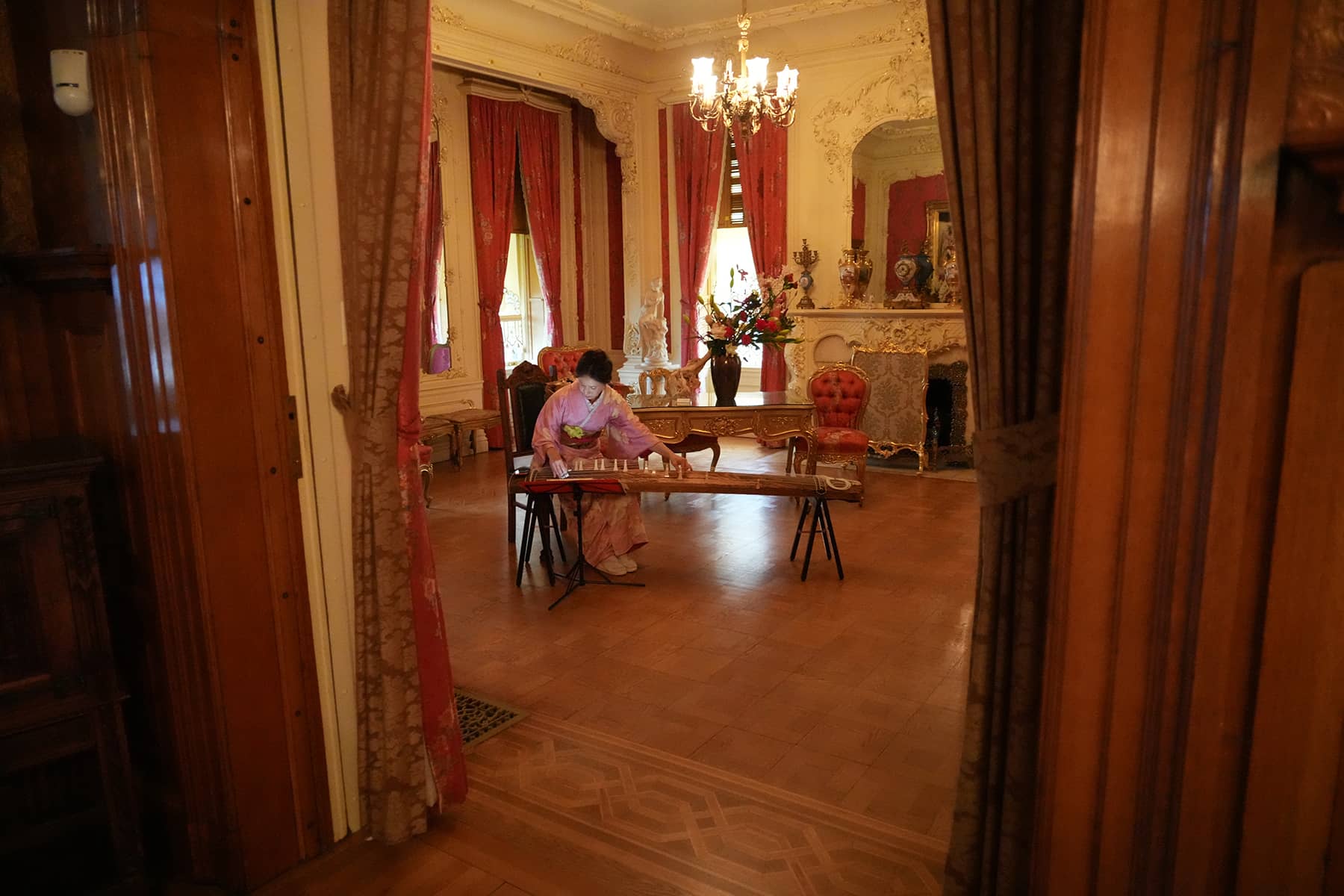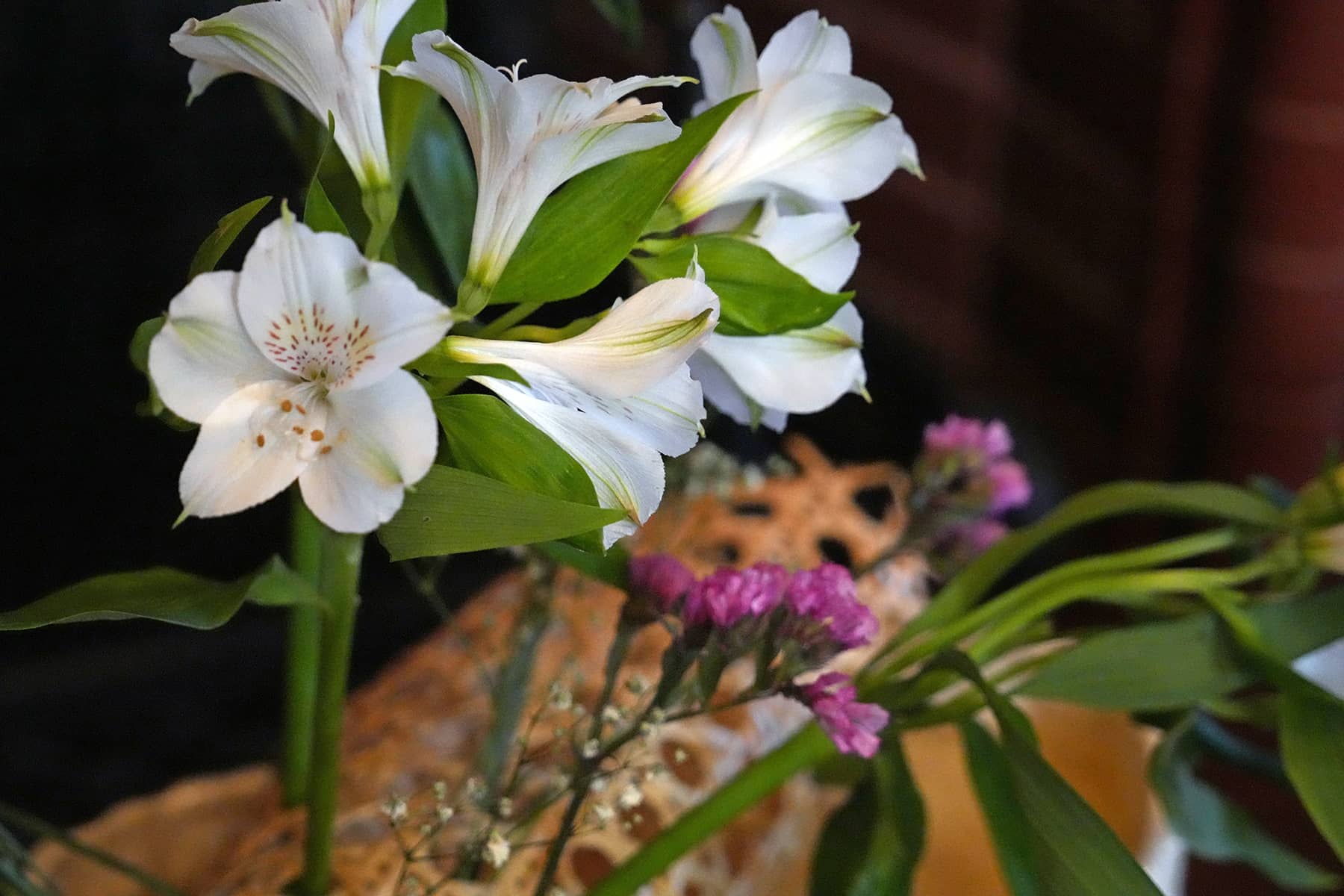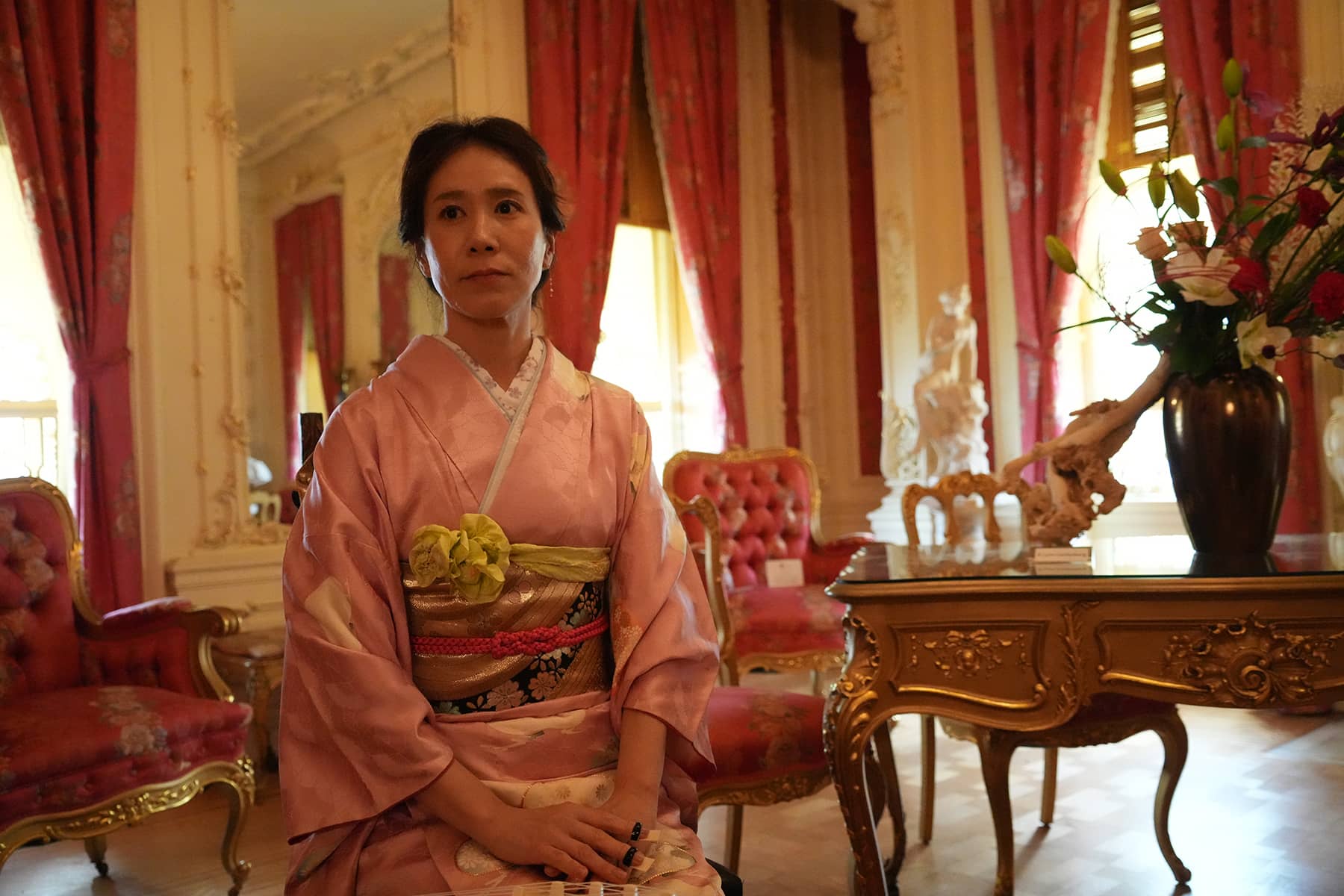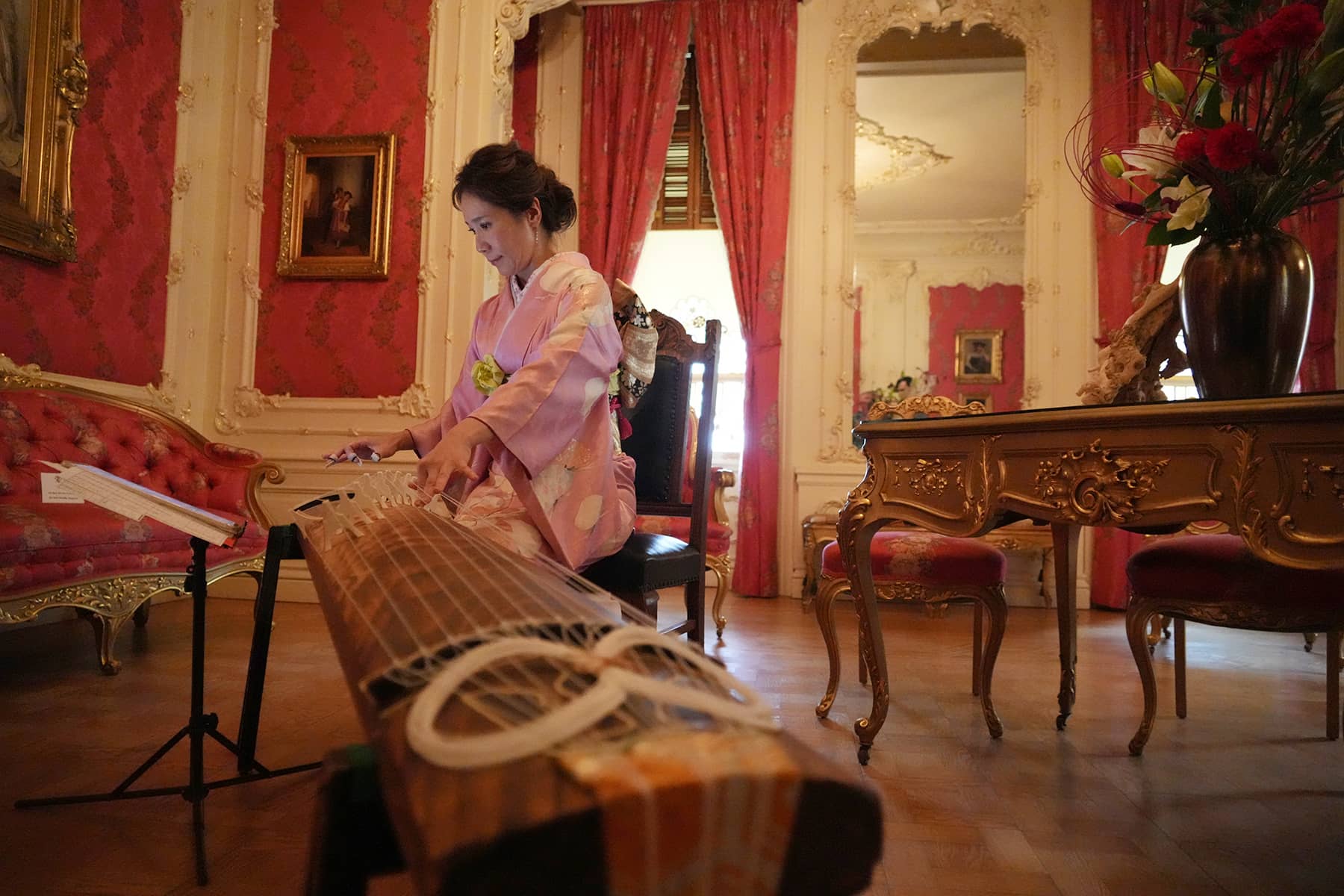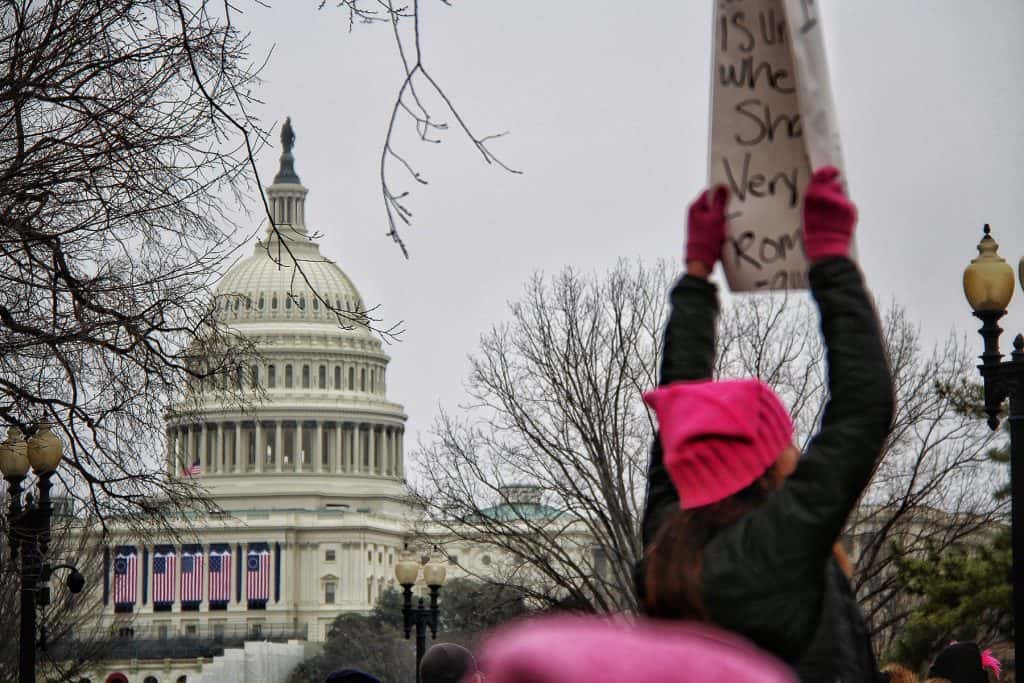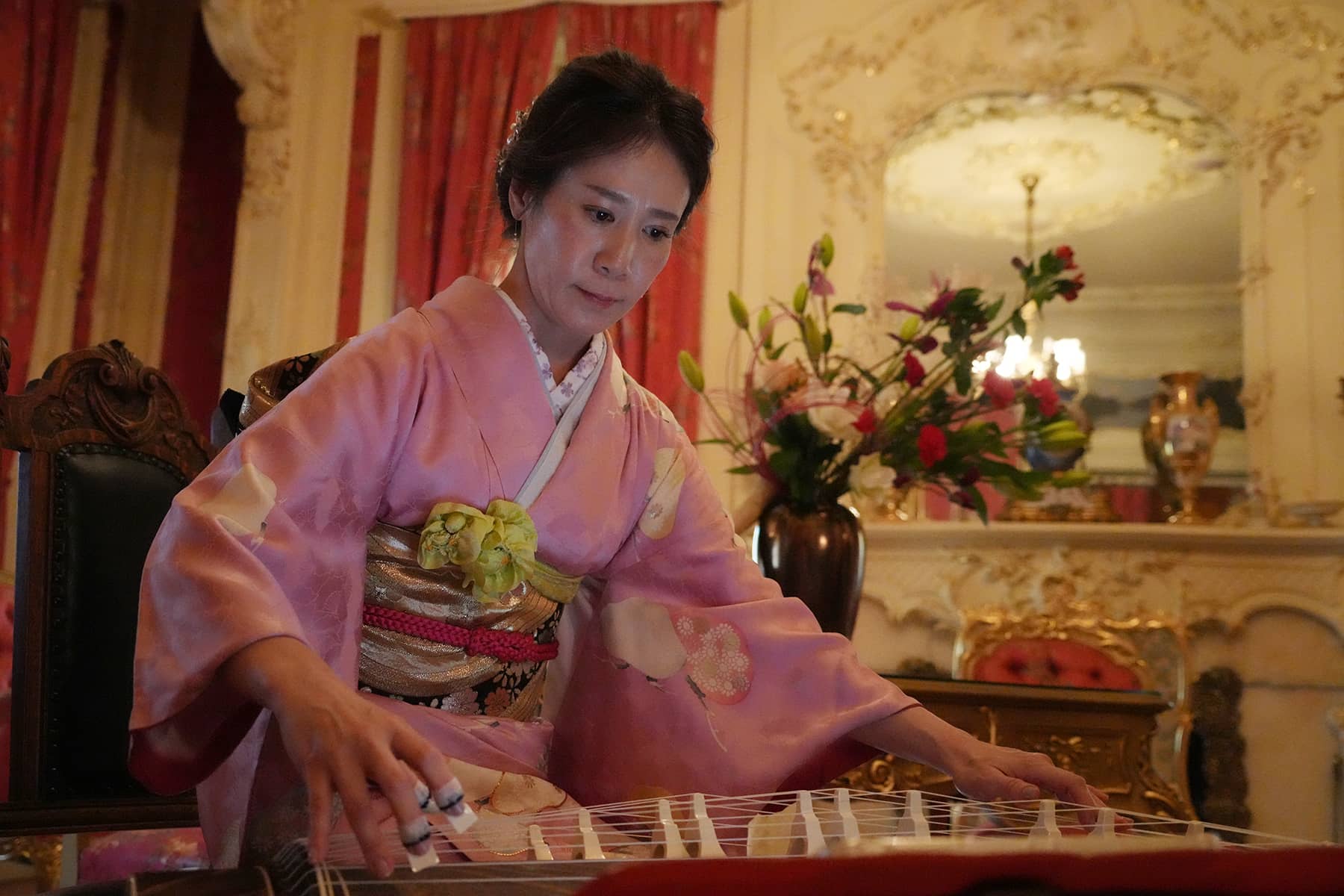
The Pabst Mansion hosted an original cultural exhibition of the ancient art of Japanese floral arrangements for a second year, from April 28 to May 1, in partnership with Ikebana International Milwaukee Chapter 22.
“Floral Reflections: Ikebana at the Pabst Mansion” featured more than twenty flora displays by a dozen artisans, positioned throughout the historic mansion. Literally meaning “giving life to flowers,” ikebana (生け花) seeks to bring nature and humanity closer together.
“What excites me most about this year’s event is that the exhibition is in its second year,” said Jocelyn Slocum, Director of Operations & Curatorial Affairs at Pabst Mansion. “I’m so thrilled to be able to offer this special showcase again, and see how these talented ikebana artists interpret the home in a new way.”
The 2023 exhibition further explored how kadōka (華道家) – practitioners of ikebana – could synthesize the aesthetic, history, and design of the Pabst Mansion with the beauty and art of Japanese culture and floral arrangements.
“By interpreting the past, present, and that which flows between through these meditative floral compositions, visitors are invited to reflect not only on this home and the family that once inhabited it, but also their own connections to the wider space and place around them.”
The symbolic placement of each stem, leaf, flower, and even the use of negative space was carefully considered to convey a specific message or emotion. The essence of creativity in ikebana is based on four principles – a fresh approach, movement, balance, and harmony – using the three elements of line, mass, and color.
Ikebana developed during the Muromachi period (1333–1568), but its roots date back to the sixth century when Buddhist monks introduced the tradition of flower offerings to Japan. The Japanese religion of Shinto believes that “Kami,” often thought to mean “gods” but more accurately referring to “holy spirits,” are at the root of the living world. Shinto believes Kami reside in every form of nature, so even flowers are seen as an extension of God.
Those ancient philosophies were shared as part of live arrangement demonstrations by Milwaukee’s Ikebana International members. This year’s floral collection consisted of ikebana works by Anu Garg, Cindy Hum, Lynn Laufenberg, Lynda Curl, Laurie Wareham, Carolyn Jackson, Sharon Banaszewski, Helen Surridge, Marelise Hartley, Karen Cooper, Roger Krawiecki, and Priscilla Farrell.
Ikebana is deeply rooted in Japanese philosophy and culture. The arrangement of flowers is considered a way of expressing the beauty and impermanence of nature, as well as the harmony and balance that can be achieved between humans and their environment.
In recent years, Ikebana has been used as a therapeutic practice to help people reduce stress. The art form has proven to be a calming and meditative activity, allowing practitioners to focus on the present moment and find peace in the beauty of the natural world.
Also returning for the 2023 event was acclaimed musician Tokiko Kimura playing her koto, the plucked half-tube zither that is the national instrument of Japan. Kimura studied at the renowned Ikuta Koto School in Japan, under her uncle Shinzo Miyagi who was the Ikuta schoolmaster.
“Having traditional Japanese music was a way to enhance the meditative experience provided by the art of ikebana,” added Slocum. “In addition to the beautiful sounds, the grace of Tokiko’s movements as she played her koto really mirrored the flow and elegance of the ikebana arrangements.”
The Pabst Mansion was constructed between June 1890 and July 1892 for a cost of just over $250,000. Today, it remains as one of only a few prominent residences surviving from the days when Wisconsin Avenue was known as Grand Avenue.
In March, the Pabst Mansion announced plans to carefully deconstruct and preserve salvageable elements of the pavilion adjacent to the historic home, with plans to reconstruct the building. The structure which was originally added to the property as a free-standing airing porch in the 1890s. Before the project can begin, the City of Milwaukee’s Historic Preservation Commission must first issue a Certificate of Appropriateness (COA). That decision is expected on May 1.
- Historic Milwaukee: What it takes for Pabst Mansion to preserve its 1893 pavilion for future generations
- Terracotta and Photogrammetry: How UWM’s Historic Preservation Institute uses new tech to save the past
- Pabst Around Milwaukee: Illustrated map details vast reach of Captain Frederick Pabst beyond his brewery
- Pabst Mansion creates new leadership position to address challenges and opportunities
- Pabst Mansion to co-host first “Evening Fit for a Baron” in more than 30 years
- Pabst Mansion decks the halls for Christmas Twilight Tours
- Pabst Mansion celebrates 125 years with open house and family reunion
- Photo Essay: Pabst and Gettelman Family attend Baron Brunch
- Photo Essay: Pabst for Paws
- Pabst donations on 180th birthday honor animal charity
- Video: A look inside the Pabst Mansion
Lee Matz

